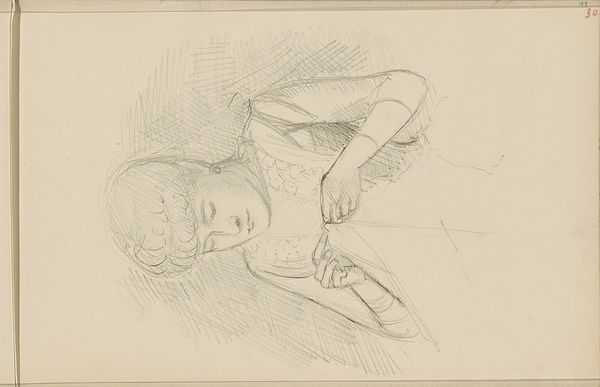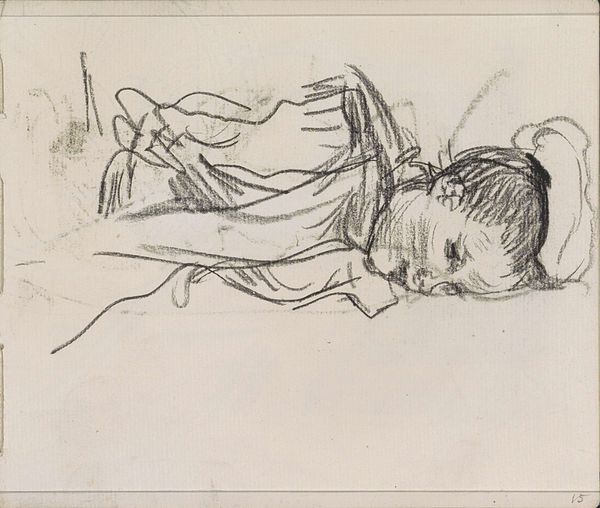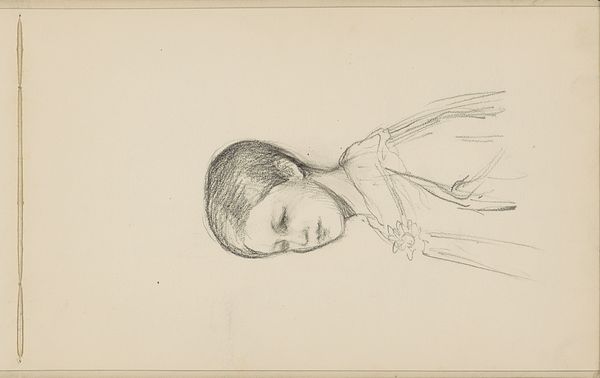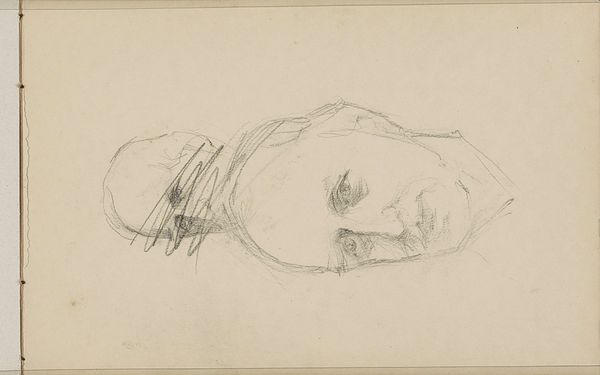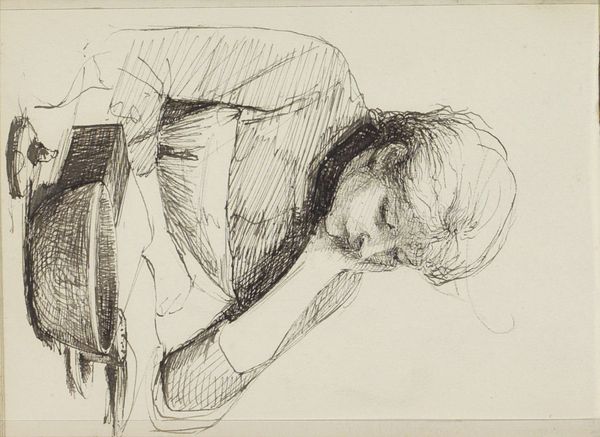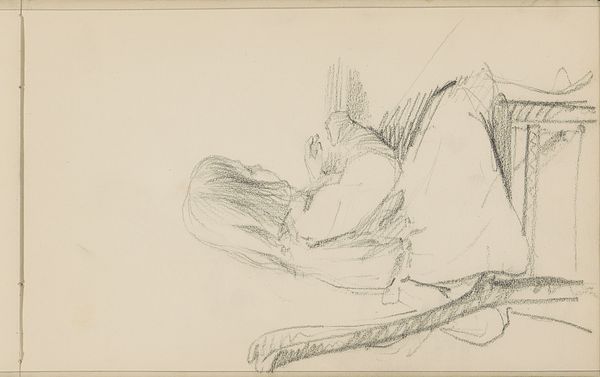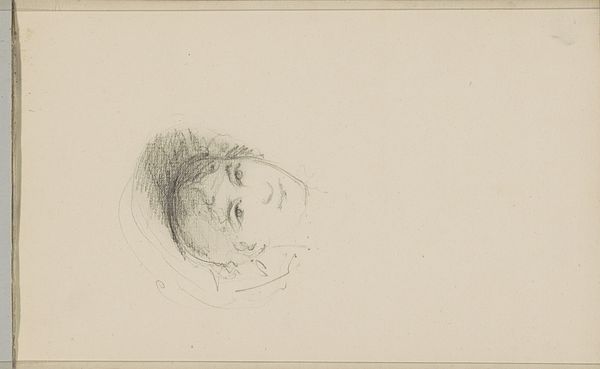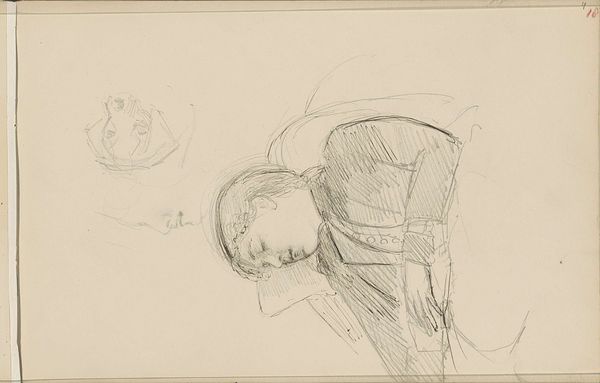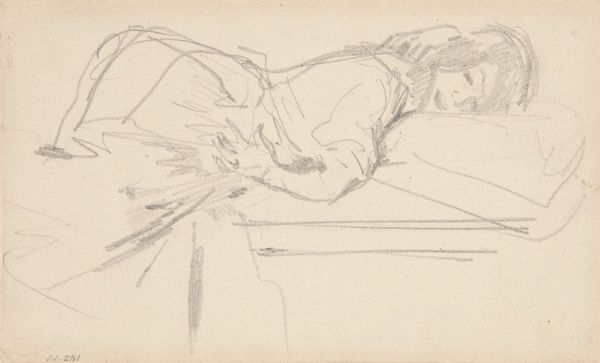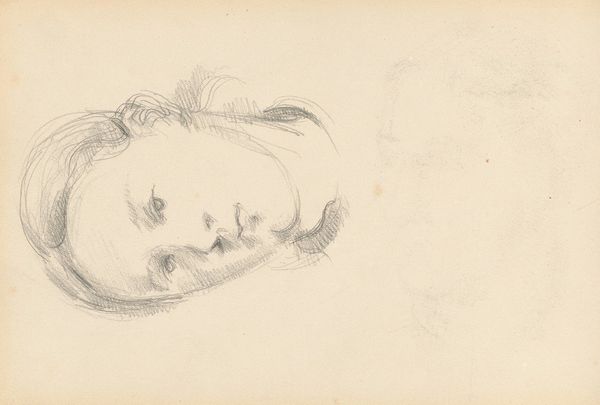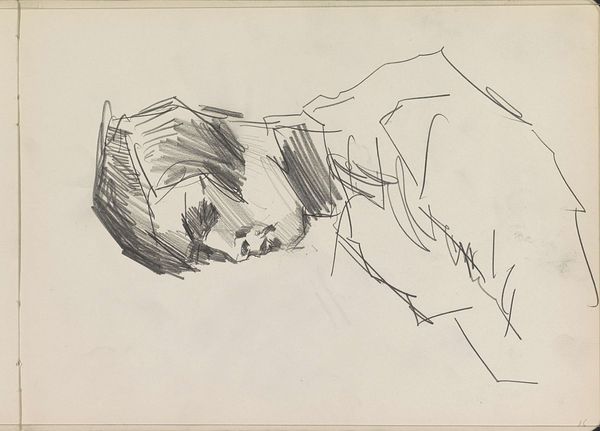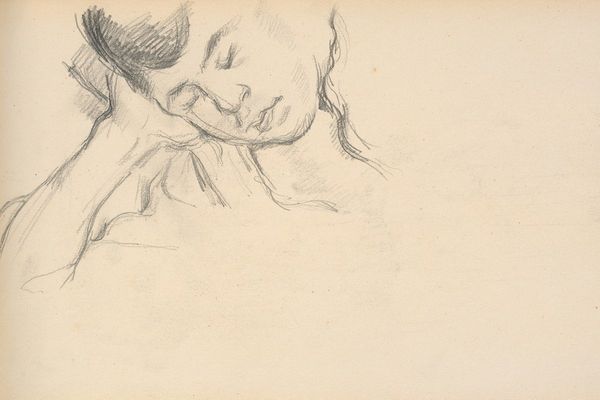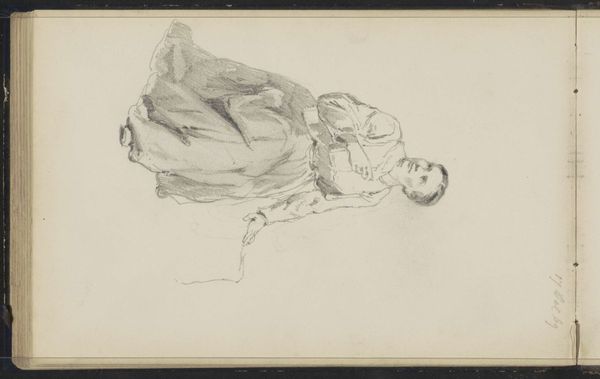
drawing, pencil
#
portrait
#
drawing
#
pencil sketch
#
figuration
#
pencil
#
portrait drawing
Copyright: Rijks Museum: Open Domain
Curator: Before us, we have “Strijkende jonge vrouw,” or "Young Woman Ironing," a pencil drawing held at the Rijksmuseum, created sometime between 1865 and 1913 by Bramine Hubrecht. Editor: It's stark, almost haunting. The stark lines feel vulnerable, and there's something profoundly human about the ordinary act captured. Curator: Indeed. What strikes me first is the directness of the medium. It is a pencil drawing, plain and simple. No hidden layers or complex chemistry, just graphite on paper and its immediacy speaks volumes about access and the material reality of making art. One can imagine the very pressure and labor. Editor: True, the use of pencil is economical, lending a casual, sketch-like quality. The form emerges tentatively through layering lines, creating volume. Consider the subtle variations of tone suggesting shadow, weight, form; look to the details in the sleeves and hands! The lines create dynamic planes to capture form, adding to the expressive feel of the drawing. Curator: Let's not overlook the subject itself. The representation of labor, specifically a woman engaged in domestic work. These kinds of quotidian tasks were integral to household economies, reflecting broader social hierarchies and gendered divisions of labor. What might look simplistic to us is laden with this context. Editor: But I can't help but wonder if that overdetermines its impact. We are perhaps meant to consider more the relationship between artist and model. Observe how the young woman's gaze is downward, withdrawn, which conveys both melancholy and introspection through the very posture captured in lines and values. The artist subtly uses formal composition to create a deeper narrative and tone. Curator: Fair enough, but it's difficult for me to divorce the artwork from its social framework, particularly with an artwork that speaks so clearly of the gendered dimensions of labor from the time. Editor: And that friction between formalism and materialism is precisely why understanding any work of art is enriched through varied perspective. Each lens amplifies unique components within the greater visual language. Curator: Absolutely, this has indeed enriched my understanding; that very tension between domestic representation, the artistic capture, and social context creates deeper, layered interpretation.
Comments
No comments
Be the first to comment and join the conversation on the ultimate creative platform.
